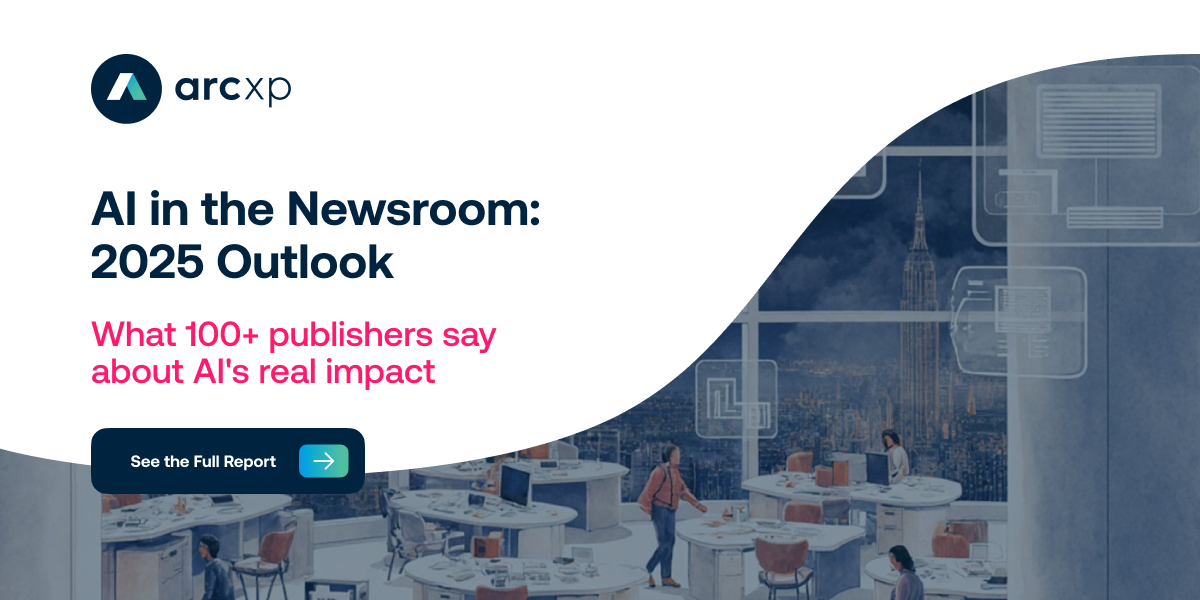Modernizing PR

The forces ravaging the institutional media industry will have profound effects on every node of the Information Space.
Today, Adam Mendelsohn gives his view of why PR needs to change. Adam founded culture of sports property OffBall and was a guest on The Rebooting Show. I’ve known Adam for a while as someone who operates as a communications advisor to important people like LeBron James and various top companies. He also runs his own media company. He occupies an interesting space that is far from the mechanized PR industry but rubs up against it. This is why I think the dividing lines of the past are getting erased in the Information Space. How you exert influence through messaging to key constituencies doesn't line up with loading up the press release trebuchet and deploying armies of junior employees to spam a dwindling supply of reporters.
Before Adam takes over, a few things we’re working on at TRB:
- Register for an interactive discussion I’m having with A Media Operator’s Jacob Donnelly. We are discussing the rise of independent media that stands in contrast to the gloom surrounding legacy media models. Registrants will also get a discount to our respective membership/subscription programs. The session is on Wednesday, August 5, at 1pmET. Sign up.
- Take a brief survey we are conducting in collaboration with Piano on the state of publisher monetization.
- See the replay of yesterday’s Online Forum with Forbes chief innovation officer Nina Gould walking through how Forbes took a typically convoluted audience data situation and unified it with BlueConic’s CDP. See the replay.

What 100+ media companies told us about AI

AI is no longer a future bet—it’s a newsroom essential. In this exclusive State of the Industry report, Digiday and Arc XP surveyed over 100 media leaders to uncover how publishers and broadcasters are actually using AI today, what’s working, and where challenges remain.
Whether you’re just starting to explore AI or scaling existing tools, this report provides a grounded, data-backed look at how your peers are navigating the AI landscape—and what it means for the future of journalism.
PR isn’t immune to media’s deconstruction
By Adam Mendelsohn
Media isn’t just changing, it’s splintering. The institutions that once shaped public perception are shrinking, and in their place, influence is being rebuilt from the ground up: by creators, communities, and platforms moving faster than most companies can follow.
I’ve worked in media and communications for over 25 years, and I have no doubt we're seeing an extinction-level threat – that's being accelerated by AI – to every industry that serves as an intermediary. Large agencies in marketing, advertising, media buying, management consulting are all facing a kill-or-be-killed moment.
But one industry is already cooked: public relations. For decades, PR operated in a relatively stable media environment. Influence was concentrated. If you landed coverage in The New York Times, CNN, and a few key trade outlets, you could assume your message reached your customers, employees, investors, and regulators. It was a game of managing relationships with a few powerful institutions.
Today, influence is fractured, ambient, and often invisible to those still clinging to legacy distribution models. AI will accelerate that fragmentation. The channels of mass distribution are losing their power, while truly influential voices are self-selecting into smaller, more engaged communities. Peak social is over. Engagement is now the premium KPI, and influence is defined by who you reach — not how many. This runs counter to how most of the PR industry is constructed.
In the short run, the decentralization of institutional media has been a boon to PR. More fragmentation and complexity is typically a good thing for agency service providers. In fact, as news organizations have shrunk, PR has expanded.
In the long run, as Brian wrote earlier this week, the old structures of the media economy do need to be replaced. Good, creative public relations will continue to be immensely valuable in this new landscape, while sprawl, manpower, and expansiveness of today’s PR outfits will prove to be a handicap.
At its core, PR is how organizations influence and manage media coverage: amplify the positive, minimize the negative. Big PR firms essentially sell two things. The first is skilled labor. These firms were built to support large organizations with high volumes of writing, research, media tracking, and pitching stories to journalists — often billing hourly because it’s more profitable. The model is built around a few highly paid leaders managing the client relationship and incentivized to increase hours or upsell more work. The work is done by large teams of middle managers and junior staff. Retainers regularly hit six figures per month accounting for lots of work and lots of people. The threat to this business model from AI is more than obvious.
The second thing PR firms sell are relationships and domain expertise. Organizations need people who are deeply embedded in the issues and communities that truly influence their industry. That’s why there are specialized firms in healthcare, finance, energy, sports, and beyond. But this area is being disrupted too — and the implications for the future of communication are even more profound.
Like advertising, PR has been a cornerstone of capitalism for over a century. But while marketing sells products, PR shapes reputation and narrative. Fortune 500 firms have teams of dozens to hundreds; holding companies like Omnicom and WPP own multiple PR agencies that employ thousands; and private equity has spent a decade buying up independents. All told, the Bureau of Labor Statistics puts total U.S. employment in PR at over 300,000.
While the collapse of this model will have major economic fallout, its impact on the very foundations of how businesses communicate will be drastic.
Now, serious legacy media like The New York Times and The Wall Street Journal will remain essential. In fact, as AI accelerates the commodification of information, the most innovative of these institutions may become even more impactful. No doubt a significant story from legacy media will cut through the AI slop but the era of their influence being so concentrated and systemic is forever changed — and the value of their gatekeepers continues to decline.
Consider what a CEO faces today when navigating a major announcement or crisis. Highly influential outlets like Puck, Axios, The Free Press, The Information, and Semafor are must-reads for industry insiders. Top Substack writers like Emily Sundberg and Eric Newcomer wield real power and they, along with all the other great creators on Substack, are just getting started. Niche podcasts are essential. Emerging news brands like TBPN and MeidasTouch operate dynamic hybrid models across social, audio, and YouTube.
And more important than all of them is this: modern CEOs are expected to communicate directly and frequently. Everyone who matters, from your employees to your investors, to your most influential customers are all curating their own news diets. Building effective and authentic ways to reach them directly is no longer an option. Posting on LinkedIn twice a week isn’t it.
This is so much bigger than Donald Trump eschewing traditional media or Joe Rogan’s massive audience and influence. It’s a total reorganization in how people consume news and information and the opportunity for those building a new way to operate is massive.
If the future of public relations is truly about engagement and specialization, companies will pay for creativity and efficiency rather than manpower and relationships. The future will require specializing in how AI can deepen research, sharpen writing, and generate better insights quickly. Those who understand how to artfully and authentically connect across a multitude of communities and news creators while expertly leveraging AI to do it faster, better, and smarter will name their price.
The industry that’s defined my career is over, and I’ve never been more excited about the future. Impactful PR will increasingly mean winning on ideas, creativity, and the ability to gain trust in complex and fast-moving environments—not just being an intermediary. The next generation is going to totally redefine the industry.
Adam Mendelsohn is the founder of Upland Workshop, an independent firm specializing in media and communications.
Thanks for reading. Send me an note with your feedback by hitting reply.
For partnership information, see how we work with clients and get in touch.


